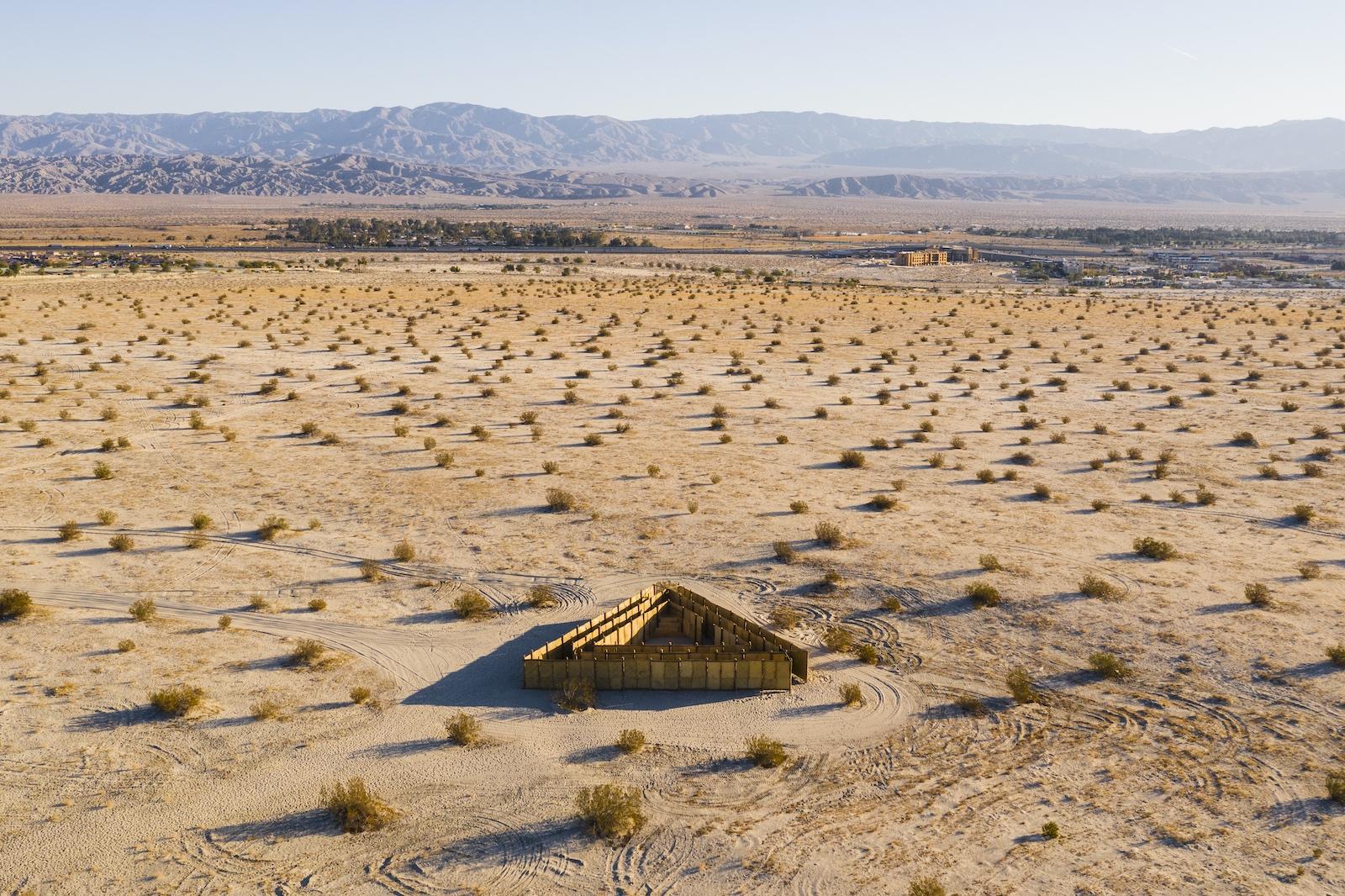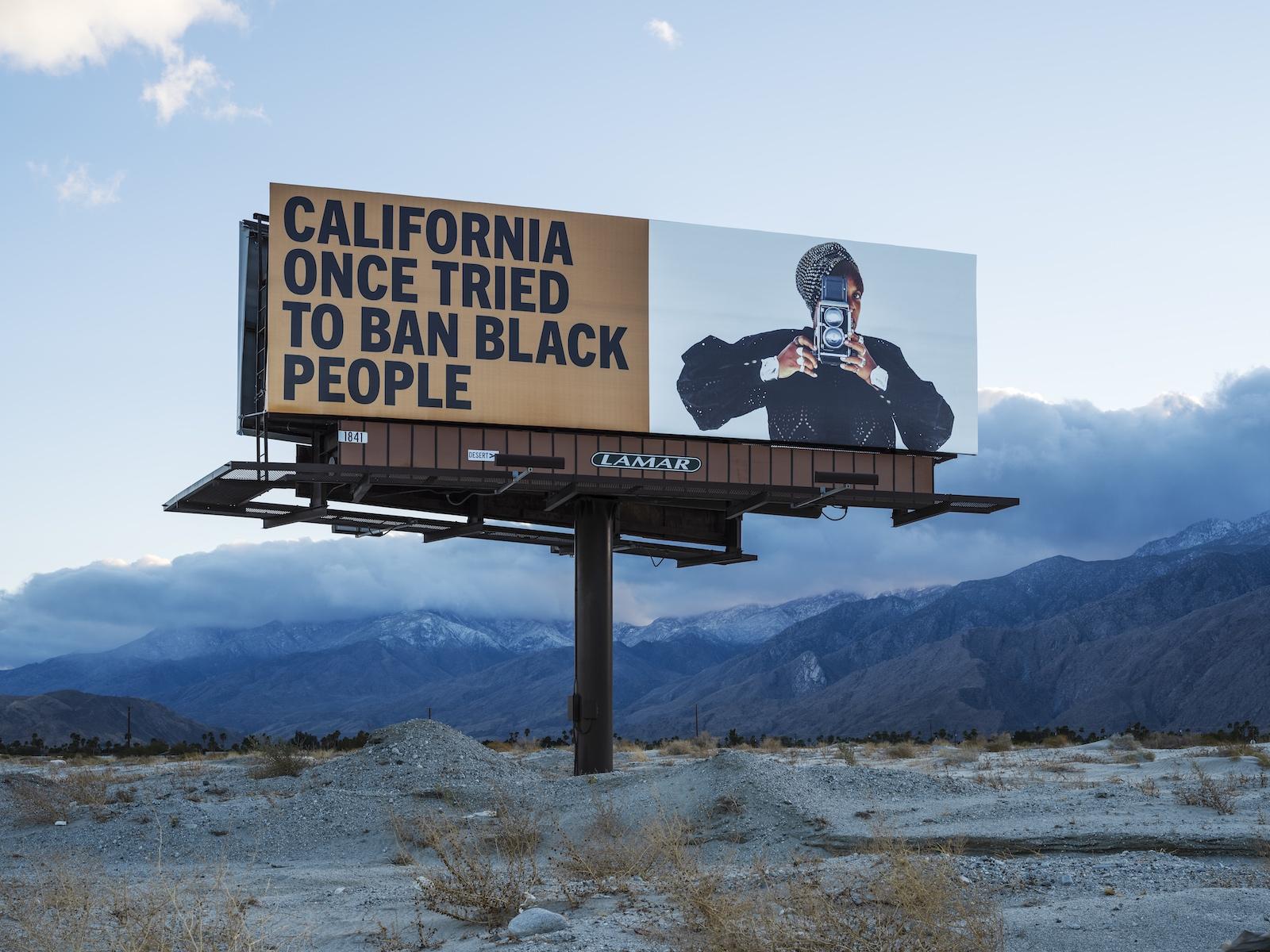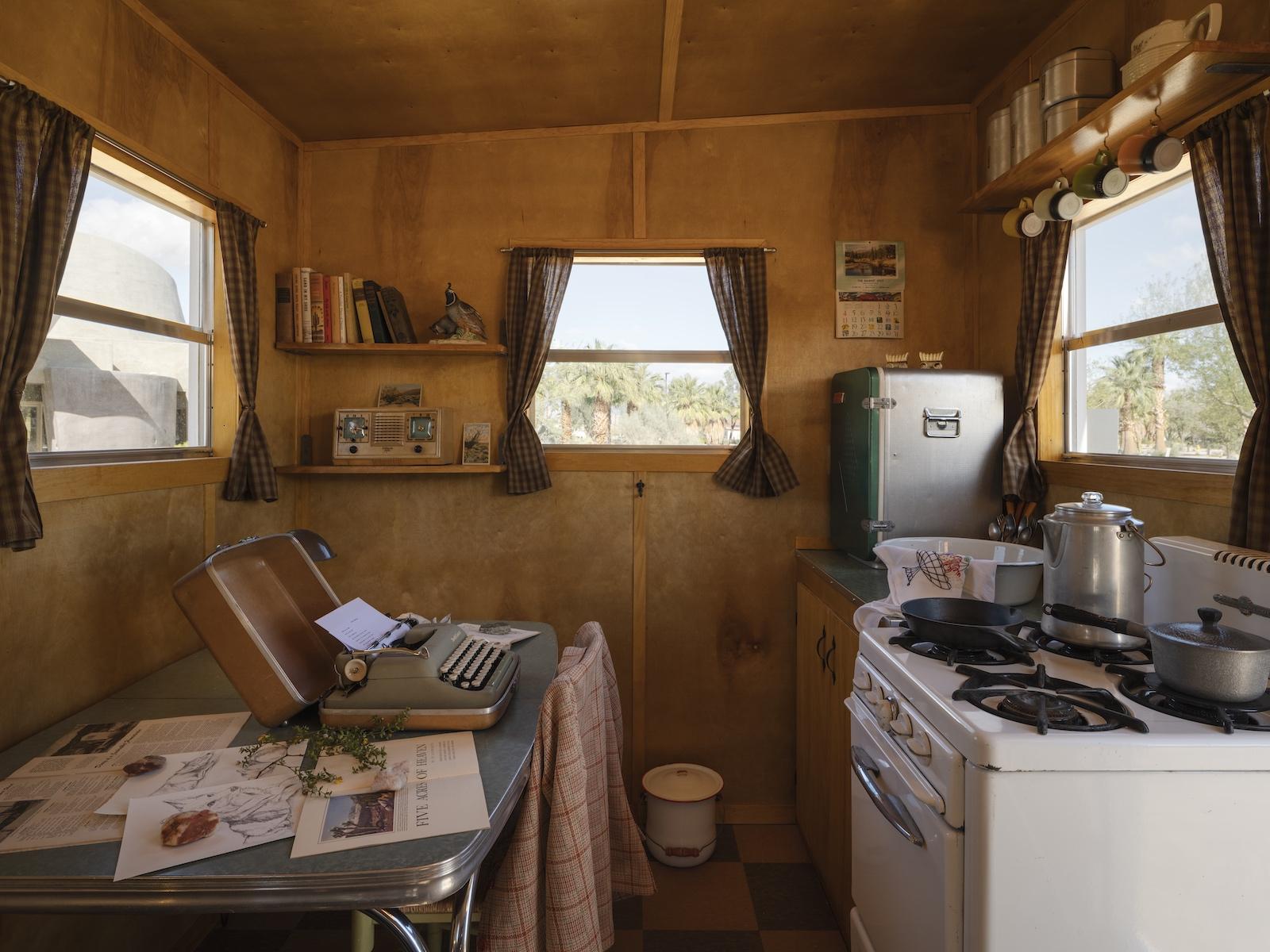Jackrabbit Homestead is Kim Stringfellow’s diorama symbolizing homesteaders who arrived in 1938, on the heels of Southern California’s Small Tract Act. It stands in contrast to Nicholas Galanin’s Never Forget, which comments on land appropriation from indigenous peoples in Southern California. Never Forget rises fifty feet and is three hundred thirty feet long, a scale replica of the famous Hollywood sign lengthened to its original “Hollywoodland,” promoting a 1923 housing development that excluded people of color.
“The most important aspect of it is the land-back aspect of it, a call for landowners, private and public, to consider the history of the land they have title to and to further investigate how that’s impacted indigenous communities,” says Galanin, a member of the Tlingit and Unangax̂ tribes in Alaska.
Pieces like White Noise American Prayer Rug, a prayer rug with a T.V. screen showing static, and Things Are Looking Native, Native's Looking Whiter, a photo portrait split between Star Wars’ Princess Leia and a Hopi woman, with both wearing the same hairstyle, appeared in his 2018 retrospective at Phoenix, Arizona’s Heard Museum.
“The land-back movement is very real and is necessary for our community to understand and listen to. This work is not a land acknowledgment, it's a call for a land return to indigenous peoples.”
Erasure of a different kind is the focus of Felipe Baeza’s mural Finding Home in My Own Flesh, which examines the invisibility of queer communities of color in the Coachella Valley. ParaPivot (sempiternal clouds) by Alicja Kwade is a large-scale sculptural work with white rocks seated on a metal frame. Another large-scale piece, The Passenger by Eduardo Sarabia is a triangular maze structure made from woven palm tree fiber. Stratas of time are emulated in Zahrah Alghamdi’s What Lies Behind the Walls, a monumental sculptural wall that echoes abandoned buildings in the North Saudi desert.
Environmental issues loom large in the abstract works of Vivian Suter, and her Tamanrasset is no exception. An installation of large-scale paintings and light set inside a modernist building, Tamanrasset draws from the colors and abstractions of the desert outside. It’s named for a Saharan oasis she came across forty-five years ago, “a gateway to the vast and unknown.”
“For me, every painting is a departure. And the paintings for ‘Tamanrasset’ are interesting for me to show because of the interaction they will have with the desert surroundings,” she said in an email. “As the paintings were made in Guatemala, one could also think that the building and the paintings will be like an oasis in the desert.”
“Something serving as a refuge, relief, or pleasant change from what is usual, annoying, difficult, etc.” That’s the definition of the word “oasis”. It also defines Desert X, a perfect place for the art-starved to slake their thirst. But like a mirage, the festival changes with the light.

























![DEl Kathryn Barton [Australian b. 1972] the more than human love , 2025 Acrylic on French linen 78 3/4 x 137 3/4 inches 200 x 350 cm Framed dimensions: 79 7/8 x 139 inches 203 x 353 cm](/sites/default/files/styles/image_5_column/public/ab15211bartonthe-more-human-lovelg.jpg?itok=wW_Qrve3)


